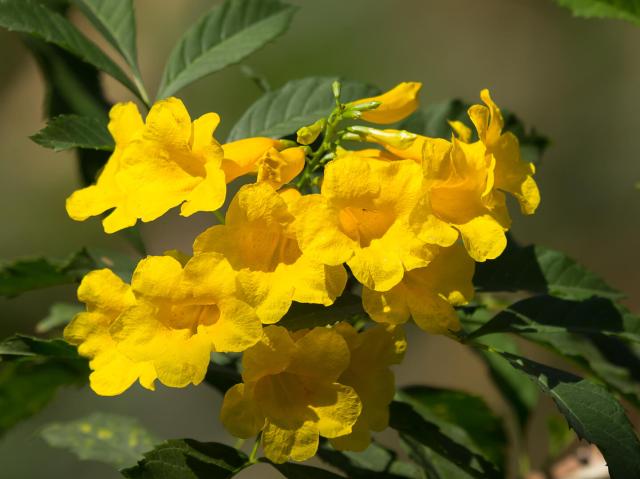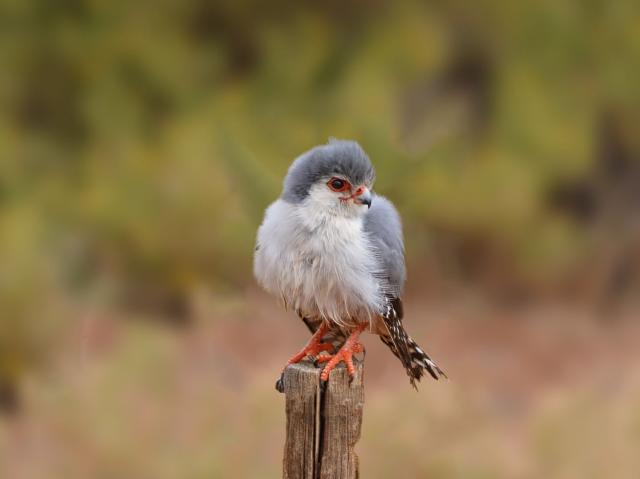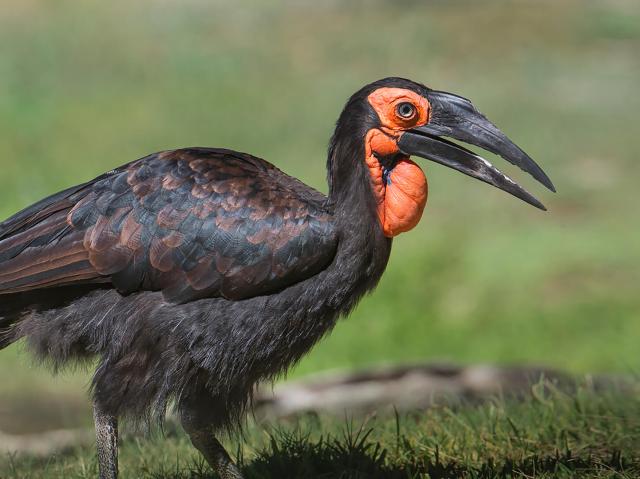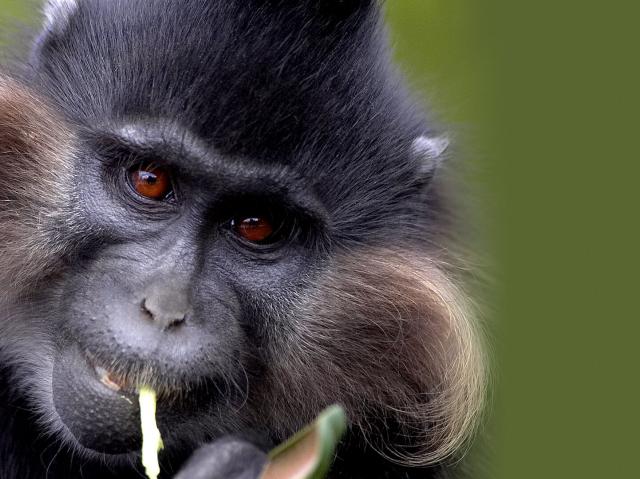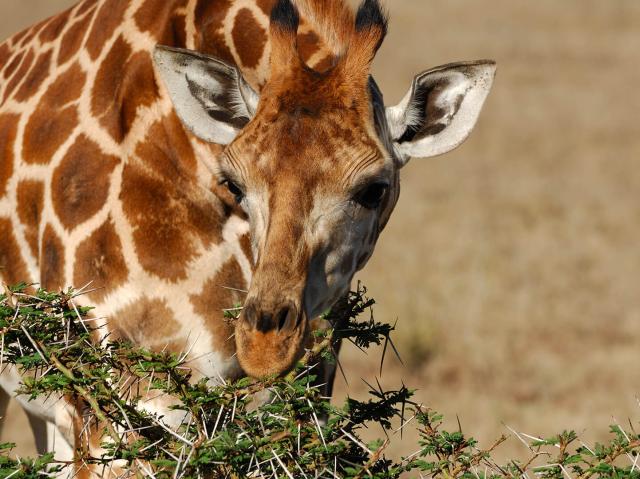
Desert Tortoise

- CLASS: Reptilia (Reptiles)
- ORDER: Testudines
- FAMILY: Testudinae
- GENUS: Gopherus
- SPECIES: agassizii

ABOUT
A tortoise to talk about: If you’ve ever visited the Mojave or Sonoran desert in California and saw a tortoise scooting across the sand, you most likely saw a desert tortoise. Slow-growing and long-lived, it is the largest terrestrial turtle in the United States and is a keystone species in the Mojave Desert ecosystem, providing burrows for other wildlife and dispersing seeds when they eat grasses and other plants.
The tortoise’s carapace (top shell) is usually brown or gray without any pattern, but it often may be brown or tan in the center of the shell. The plastron (underside) is yellowish or brownish. A desert tortoise has good hearing, but no external ear flaps. Its domed shell provides a large space for its lungs and for efficient thermoregulation, an important adaptation for life in the desert.
HABITAT AND DIET
The Mojave Desert’s summers are harsh, making it difficult to be active, with temperatures reaching well above 105 degrees Fahrenheit (41 degrees Celsius) and with very little (if any) rain. Yet the desert tortoise is well adapted to deal with such extreme weather by going into estivation (decreased physiological activity) in a burrow during the extreme heat of the summer.
A tortoise’s front limbs work like shovels, with long, sturdy nails that are good for digging. Large, cone-shaped scales on the limbs provide protection from scratchy vegetation the tortoise may encounter and help it retain water. Cleverly, the tortoise digs basins in the soil to catch the infrequent rain that falls. The tortoise remembers where these “watering holes” are and walks directly to them after a bit of rain. Another water-saving tactic is storing up to 40 percent of its body weight in water inside the bladder, to be absorbed as necessary.
Desert tortoises live in underground burrows. By spending so much time underground, they are able to survive on very little food. These cold-blooded critters are the same temperature as their surroundings, so their burrow allows them to keep cool in the hot temperatures. During the winter, when food is scarce, tortoises brumate, a form of reptilian hibernation, in their burrow with a wall of dirt at the entrance to keep out the rain and cold for the entire winter season. Come spring, tortoises emerge and bask in the warm sun to jump-start their metabolism. They then devour vegetation with great relish!
Burrows also protect the tortoises from predators. Coyotes and kit foxes prey on adult tortoises. Badgers, skunks, ground squirrels, ravens, Gila monsters, and roadrunners can prey on juvenile tortoises and tortoise eggs. Interestingly, other wildlife such as pack rats, burrowing owls, kangaroo rats, desert jackrabbits, gopher snakes, banded geckos, and cactus wrens also use tortoise burrows. From ground level, they extend down about 3 to 4 feet (1 to 1.2 meters), typically at a 45-degree angle. Normally one burrow houses a single individual, or one male and one female.
Desert tortoises may also create a den or cave, dug horizontally into the banks of dry washes and extending 8 to 30 feet (2.4 to 9 meters). Several tortoises can occupy one den at the same time, especially during brumation. One record showed 17 tortoises using the same winter den!
Rainfall and temperature control the tortoises’ movements; desert tortoises are most active in spring, early summer, and fall before the colder weather sets in. During the active season, they move across their home range to forage, using multiple burrows as needed. After foraging, tortoises may plop down in a limp, spread-eagle posture with limbs and neck extended, possibly to increase body temperature and help digestion.
Desert tortoises are herbivores, dining on grasses, flowers, fruit, and cactus. These foods contain a lot of moisture, and desert tortoises can go for up to one year without access to fresh water! Tortoises do not have teeth; instead, they have a beak and grind their food. Examples of preferred tortoise forage are prickly pear cactus, primrose, beavertail cactus, white clover, hibiscus, globemallow, desert dandelion, and desert marigold. Desert tortoises need about 20 to 30 days to digest their food, spreading the seeds from their meals across their habitat as they poop. This aids in the repopulation of native plants and grasses in the Mojave Desert.
FAMILY LIFE
During the active season, males spar for the privilege of breeding, using their gular horn (part of the plastron lying beneath the extended head) to hook other males and overturn them during aggressive interactions. Female desert tortoises do not mate until they are 15 to 20 years old. They can store sperm until conditions are right, eventually laying 2 to 14 eggs the size of Ping-pong balls in a shallow nest they dig near their burrow. They typically lay eggs between May and July, and hatchlings emerge from eggs from mid-August to October.
A mother does not defend the nest or raise her offspring; instead, after 90 to 120 days of incubation, the young hatch and fend for themselves. Hatchlings may lunge forward and hiss if disturbed. Few young tortoises make it to adulthood. Their shells remain soft for the first several years of life, and coyotes, roadrunners, Gila monsters, and ravens prey upon them. Even domestic dogs attack these reptiles, often injuring their limbs before the tortoise has a chance to retreat into its shell.
Chin glands on a desert tortoise become active at sexual maturity. They serve as chemical and visual signals to other tortoises. Dominant males have chin glands that are larger than other males’ and contain more testosterone. Desert tortoise vocalizations include hisses, grunts, and moans, and the males vocalize during mating. Head bobs are another form of communication, particularly to get a female’s attention!
AT THE ZOO
From 2009 to 2014, San Diego Zoo Wildlife Alliance partnered with the U.S. Fish and Wildlife Service, the Bureau of Land Management, and the Nevada Department of Wildlife to operate the Desert Tortoise Conservation Center (DTCC) in Las Vegas, to aid in the recovery of desert tortoise populations, as well as the Mojave Desert ecosystem. During its operation, the DTCC helped nearly 1,000 desert tortoises each year, including many acquired from people in Nevada’s Clark County who turned in pet desert tortoises they didn’t want anymore or tortoises they found wandering in developed areas.
CONSERVATION
Since 1989, the US has protected desert tortoises. Once common throughout the Mojave and Sonoran desert of California, Nevada, and Arizona, desert tortoise populations have declined by an estimated 90 percent in the last 20 years. As the human population in these areas increases, the tortoise population has decreased. But how are humans causing this devastation? A number of culprits have been identified.
Off-road vehicles cause enormous damage to the desert plant community. When the plants are destroyed, the tortoises are without a source of food and water. It has been estimated that it can take up to 200 years for some of the destroyed habitat to recover. Off-road vehicles often run over tortoise burrows, crushing the tortoise inside. Large numbers of cattle graze on publicly owned deserts, depriving the tortoises of critical forage.
New housing developments and solar energy projects have sprung up around some of the older desert cities; much of this land is prime tortoise habitat. As a result of this building boom, large numbers of tortoises have been displaced or killed outright.
Increased human populations have brought an increase of predators that feed on human garbage and also forage throughout the desert. Ravens seek out newly hatched desert tortoises, while feral dogs easily kill and eat young tortoises, and kill or seriously maim adult tortoises. There are now an estimated 150,000 desert tortoises living in critical habitat.
How can you help desert tortoises? It is always important to reduce, reuse, and recycle, in order to generate less waste and conserve our natural resources. If you see a tortoise in the desert, make sure to keep your distance. Even though you mean it no harm, being handled is frightening to a tortoise. It is also against the law to touch them.
If you or someone you know already has a desert tortoise and has been keeping it as a pet—keep taking good care of it! Pet tortoises shouldn’t be “set free,” because they may not be able to survive on their own and because they may introduce disease to the ecosystem. Desert tortoises have been around for millions of years. We have to protect them, so they will be here a long, long time to come.
By supporting San Diego Zoo Wildlife Alliance, you are our ally in saving and protecting wildlife around the globe.
LIFE SPAN
35 years in the wilderness; 50 to 100 years in managed care
YOUNG
Number of eggs laid: Up to 14
Incubation period: 3 to 4 months
Length at hatch: 1.6 to 1.7 inches (4.2 to 4.5 centimeters)
Age of maturity: 12 to 20 years
SIZE
Length: 8 to 15 inches (20 to 38 centimeters)
Height: 4 to 6 inches (10 to 15 centimeters)
Weight: 8 to 15 pounds (3.6 to 6.8 kilograms)
FUN FACTS
California’s state reptile is the desert tortoise.
A desert tortoise spends 95 percent of its life in a burrow.
A female desert tortoise can retain sperm and lay fertile eggs for up to 15 years after mating only one time with a male.
If you startle a desert tortoise, it could “void,” or empty its bladder, leading to dehydration and possibly death.
Desert tortoises may live longer than humans.




